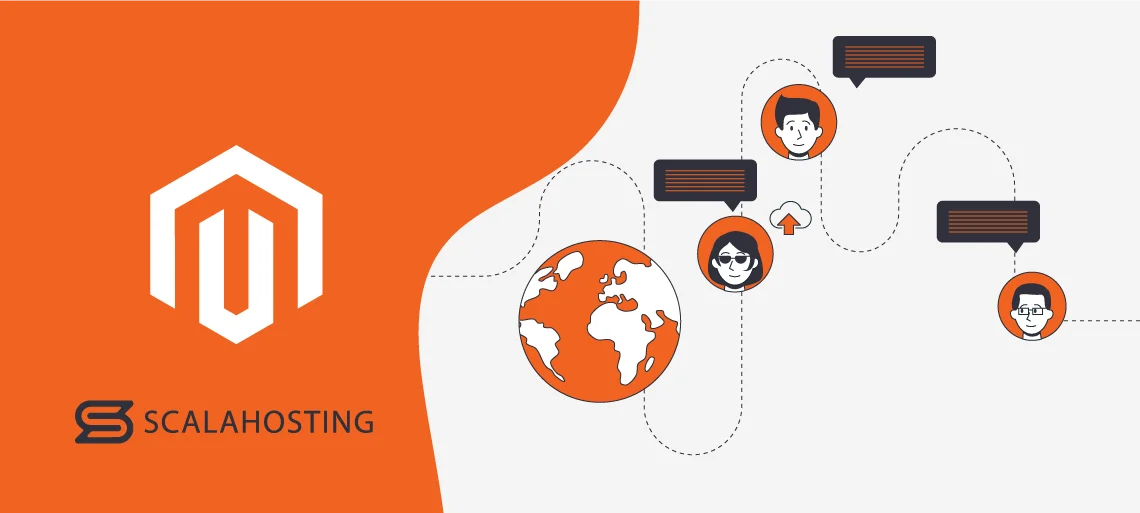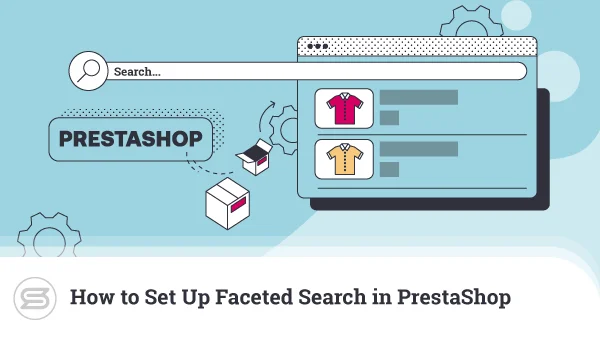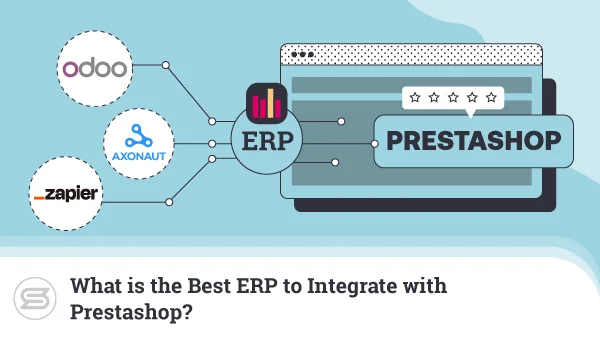What is Magento? Everything You Need to Know
We can all agree that the ecommerce world offers quite a lot of platforms to choose from, with Magento being one of them.
But what is Magento?
And how does it stand out compared to the competition?
Originally developed by Varien Inc. and later acquired by Adobe in 2018, the platform has evolved into a powerhouse trusted by businesses of all sizes. It is not without its specifics, though. There is a learning curve to using it, but the results make it all worthwhile.
This article will delve into Magento architecture, explore the rich feature set, and discover what makes it so popular.
Introduction to Magento

Magento is an ecommerce platform created in 2008 by Varien Inc., a company founded by Roy Rubin and Yoav Kutner. The platform’s modular architecture, coupled with its extensive customization capabilities, set it apart from its competitors almost immediately.
The release of Magento 1 marked a significant leap forward, introducing a host of new features and enhancements. Key advancements included improved performance, enhanced scalability, and expanded functionality to meet the evolving needs of online retailers.
In 2015, the ecommerce platform underwent a major transformation with the release of Magento 2. It stood out with enhanced performance, scalability, and user experience. Most notably, the checkout process was redesigned to be more intuitive and user-friendly, reducing cart abandonment rates and improving conversion rates. The admin interface also underwent design changes in order to provide a better user experience.
In 2018, Magento was acquired by Adobe and is now known as Adobe Commerce. And while it is true that the platform has a learning curve, it remains one of the best options on the market thanks to its unparalleled customization features.
Magento Editions
Magento offers two main editions – Magento Open Source (formerly Community Edition) and Magento Commerce ( known as Enterprise Edition). They cater to different business needs and come with distinct features and functionalities.
Magento Open Source is free and provides a solid foundation for small to medium-sized businesses. It offers a range of features and functionalities to help merchants create and manage their online stores effectively. For example, it enables merchants to customize their ecommerce stores extensively, thanks to being open-source. Users can modify the platform’s codebase, install third-party extensions, and integrate with other systems. The platform can also scale to accommodate business growth. As for support, Magento Open Source offers community forums in which developers and users share experiences and tips.
Magento Commerce is the premium version. It is designed for larger businesses with complex requirements and high-volume transactions. The platform offers advanced features, including marketing and merchandising tools, content staging and preview, and customer segmentation. Magento Commerce is optimized for performance and scalability, too. It comes with full-page caching, database sharding, and optimized indexing to ensure fast page load times and a smooth user experience. It also offers enterprise-grade support, including access to a technical support team, service level agreements (SLAs), and dedicated account management.
And then there is Magento Cloud. As the name suggests, this is a fully managed cloud hosting platform that provides a secure and scalable infrastructure. It is built on top of leading infrastructure providers such as Amazon Web Services (AWS) and Google Cloud Platform (GCP). Magento Cloud Commerce handles the infrastructure management, including server provisioning, configuration, monitoring, and scaling. This enables merchants to focus on running their businesses.
All versions have a lot to offer. Which one fits your business will depend entirely on your long-term plans.
Key Features of Magento
Magento is famous for its extensive array of features.
But are they really that special?
Let’s see what Magento has to offer your website:
- Catalog Management – the platform enables merchants to efficiently organize and manage their product catalogs. Features include batch product updates, attribute sets, configurable products, and support for virtual and downloadable products.
- Customer Management – users can manage customer accounts, profiles, and interactions. That includes customer segmentation, personalized shopping experiences, customer groups, and targeted marketing campaigns based on customer behavior.
- Content Management – merchants can create and manage static pages, blogs, and other content types. Content management features include WYSIWYG editor, content scheduling, and content versioning.
- Order Management – Magento streamlines the order process so you can easily handle it all. You can make use of tools such as order tracking, invoice generation, shipping options, and support for multiple payment gateways.
- Scalability – both Magento versions are highly scalable and capable of supporting small startups to large enterprises throughout their journey.
- Customization Capabilities – from the storefront design and layout to backend functionality, users can customize all parts of their Magento ecommerce store. They can make use of various themes and extensions.
- Mobile Responsiveness – Magento has responsive design capabilities, featuring themes and layouts that adapt seamlessly to different screen sizes.
- Multi-store Management – users can manage multiple online stores from a single Magento installation, streamlining operations and reducing administrative overhead. Each store can have its unique design, catalog, pricing, and promotions.
- Analytics and Reporting – the platform comes with built-in analytics and reporting tools to help merchants track key metrics and gain insights into their ecommerce performance. Those include sales reports, customer analytics, product performance, and conversion tracking.
- Security – as stores deal with tons of customer data, Magento offers several features to protect it from threats and vulnerabilities. Those include secure payment processing, data encryption, regular security patches, and compliance with industry standards.
And that’s just the tip of the iceberg. In short, there isn’t a feature that you might need, and Magento doesn’t offer it built-in or as an extension.
Magento Architecture
Magento’s architecture is characterized by its modular and layered design, which provides flexibility, scalability, and customization options.
It’s what the ecommerce platform is famous for.
The architecture is based on the Model-View-Controller (MVC) design pattern, which separates the application logic, presentation layer, and data model into distinct modules. This allows developers to extend and customize Magento’s functionality without modifying the core codebase, enhancing maintainability and upgradeability.
Here are its components:
- Database – stores all the data related to the online store, including product information, customer data, orders, configurations, and more. Magento utilizes a relational database management system (RDBMS) such as MySQL or MariaDB.
- Application – consists of the core application logic responsible for handling HTTP requests, routing, controllers, models, and business logic. It includes modules for catalog management, customer management, order management, and other ecommerce functionalities.
- Web Server – handles incoming HTTP requests and serves the Magento application to users’ web browsers. The platform is compatible with popular web servers such as Apache, Nginx, and LiteSpeed.
- Cache – used to improve performance and reduce server load. Caching mechanisms include full-page caching, block caching, and database query caching. They store frequently accessed data and HTML output to serve requests more efficiently.
- Indexers – optimize database queries and improve the performance of data retrieval operations. Indexers generate and maintain indexes for product attributes, categories, prices, and other data to accelerate search and filtering operations within the online store.
- Session Storage – keeps session data for logged-in users, shopping carts, and other user-specific information. It can be stored in the database, in-memory storage such as Redis or Memcached, or using external services.
- File System – Magento uses a hierarchical file system structure to organize its codebase, configuration files, templates, media files, and other resources. This allows for easy customization, extension, and deployment of Magento applications.
- Integration Points – the ecommerce platform provides integration points, such as APIs (Application Programming Interfaces) and web services, to interact with external systems, third-party services, and custom modules. These enable seamless integration with payment gateways, shipping carriers, ERP systems, etc.
Thanks to all those components, the Magento platform provides unparalleled flexibility for your online store.
Technology Stack
Magento development relies on a comprehensive technology stack that includes PHP, MySQL, Zend Framework, and more, plus web servers such as Apache or Nginx. Understanding them is essential for developers working with the ecommerce platform to build, customize, and optimize online stores.
Let’s tackle them one by one:
- PHP – a server-side scripting language known for its flexibility and ease of use. PHP enables developers to create dynamic web pages, handle HTTP requests, and interact with databases.
- MySQL – the preferred relational database management system (RDBMS) used by Magento to store and manage various types of data, including product information, customer data, orders, and configurations. MySQL provides scalability, reliability, and performance for Magento’s database operations.
- Zend Framework – an open-source, object-oriented web application framework for PHP. It provides a robust foundation for building web applications, including features such as MVC architecture, data abstraction, and code reusability.
- JavaScript – used extensively to create interactive user interfaces, enhance overall experience, and add dynamic behavior to web pages. Magento utilizes JavaScript libraries and frameworks such as jQuery and Knockout.js to implement frontend features such as AJAX-based cart operations, form validation, etc.
- Cascading Style Sheets (CSS) – used to define the presentation and layout of web pages, including styling elements such as fonts, colors, layouts, and responsive design. Magento’s frontend utilizes CSS frameworks such as LESS and Sass to streamline stylesheet management and enhance maintainability.
- Hypertext Markup Language (HTML) – the standard markup language used to structure and format web pages in Magento development. It is used to define the structure of web pages, including elements such as headings, paragraphs, images, links, and forms.
- Composer – a dependency management tool for PHP used in Magento development to manage dependencies, libraries, and packages. Composer simplifies the process of installing, updating, and managing third-party libraries and extensions in Magento projects, enhancing modularity and code reuse.
- Apache/Nginx – web servers that handle incoming HTTP requests and serve Magento applications to users’ web browsers. They are responsible for routing requests, executing PHP scripts, and delivering web pages to visitors.
- Magento Testing Framework (MTF) – an automated testing suite available for Magento 2. It can perform multiple tests, including but not limited to performance, functional, and unit testing.
Magento 1 vs. Magento 2

There are two versions of the Magento ecommerce platform, each offering unique features, enhancements, and improvements.
Let’s explore:
Magento 1 is the first version, built on the Zend Framework 1. Its technology stack also included PHP, MySQL, JavaScript, HTML/CSS, and web servers like Apache and Nginx. The platform offered features such as:
- catalog management
- product browsing
- customer accounts
- order management
- payment processing
- shipping options
Additionally, Magento 1 supported multiple stores, languages, and currencies, making it suitable for businesses operating in diverse markets.
However, this version of the platform is no longer in use.
Enter Magento 2.
It is built on a more modern and robust technology stack, including the Zend Framework 2 and 3. Magento 2 also features a modular architecture that improves performance, scalability, and maintainability. This version offers significant performance improvements over Magento 1, with faster page load times, improved server response times, and optimized database queries. Magento 2 includes full-page caching, optimized indexing, and other performance enhancements. In addition, it is designed to be more scalable and capable of handling larger volumes of traffic and transactions compared to Magento 1.
The biggest change is probably the user interface. Magento 2 offers a more user-friendly and streamlined admin panel for merchants to manage their online stores more efficiently.
The checkout process also got a makeover and now includes fewer steps and improved usability. It is optimized for mobile devices and offers guest checkout options to improve conversion rates.
So, migrating from Magento 1 to Magento 2 is the logical step. Improvements aside, the newer version gets fresh updates and security patches, which are vital for the safety of your customer data.
Magento Security Measures
When managing an online store, you’re bound to deal with a lot of customer data.
It’ll be a tragedy if it falls into the wrong hands.
Securing your Magento website should be a top priority. Thankfully, the platform has many safety features built in.
For example, Magento еnables integration with reputable payment gateways and compliance with Payment Card Industry Data Security Standard (PCI DSS) requirements. Payment data is encrypted during transmission to ensure confidentiality and integrity.
You can also make use of the authentication mechanisms. Those include:
- Password hashing
- Two-factor authentication (2FA)
- Role-based access control (RBAC)
Magento includes built-in protections against Cross-Site Scripting (XSS) attacks as well. Those include injecting malicious scripts into web pages and compromising user data. XSS protection measures help mitigate this risk by sanitizing user input and preventing malicious code execution.
In addition, the platform supports data encryption. It employs algorithms such as AES (Advanced Encryption Standard) that can be configured to protect data at rest and prevent unauthorized access.
Last but not least, Magento releases regular security patches and updates to address known vulnerabilities and security risks.
IMPORTANT: You should always update your platform, themes, and extensions to the latest available version to avoid security and performance issues.
Mobile Commerce with Magento
Let’s be honest.
Our whole lives are attached to our phones.
Shopping is just one example.
That’s why mobile optimization is vital when it comes to ecommerce and your Magento site’s success.
Thankfully, the platform offers responsive themes and templates that automatically adjust and adapt to different screen sizes and resolutions. The navigation menus make it easy for customers to browse products, choose categories, and access information. This provides a seamless and consistent shopping experience.
In addition, the checkout process is optimized for touch-based interactions. This includes swipeable product carousels, pinch-to-zoom product images, easy-to-access search bars, etc. Magento 2 also introduced a more streamlined process with fewer steps and guest options.
However, you should also play your part. To aid page load times, you can employ strategies such as:
- Lazy loading – deferring the loading of non-essential resources (such as images, scripts, or videos) until they are needed or visible on the user’s screen
- Image compression – reducing the file size of images without significantly compromising their visual quality.
- Server-side caching – storing and delivering pre-generated content directly from the server to clients, such as web browsers or mobile devices.
Thanks to those, you’ll significantly increase your page load times. And we all know that customers don’t like to wait, especially when using their mobiles.
Global Reach and Localization
Your goal is to grow your Magento webshop, right?
So, why not even reach clients all over the globe?
That’s entirely possible thanks to the platform’s multi-store and multi-language capabilities.
Magento enables merchants to create and manage multiple online stores within a single installation. You can tailor each store to specific geographic regions, languages, or target markets. That way, you’ll be offering localized content, products, and pricing to customers worldwide. The platform also has shipping and tax calculation tools, so you won’t have to worry about shipping methods, rates, and tax rules based on location. You can configure exchange rates, update currency symbols, and display prices in different currencies as well. Thankfully, Magento integrates with a wide range of global payment gateways, so you can accept payments from customers worldwide.
In addition, Magento provides built-in support for multiple languages. You can easily translate website content, product descriptions, and user interfaces, providing a seamless browsing and shopping experience for international customers. That way, you can cater to numerous audiences.
So, if you decide to go global, Magento has your back. And if you choose managed VPS hosting, nothing stands in your way of taking over the worldwide ecommerce market.
Integration Capabilities
Magento boasts extensive integration capabilities.
And we do mean extensive.
It integrates with a wide range of popular payment gateways, for example. Some of the most popular include PayPal, Stripe, Authorize.Net, etc. The platform also works seamlessly with leading shipping carriers and logistics providers such as UPS, FedEx, DHL, and more.
In case you’re wondering about enterprise resource planning (ERP) systems, Magento has your back. You can integrate with the likes of SAP Business One, Microsoft Dynamics 365, NetSuite, and Oracle ERP Cloud.
The same goes for customer relationship management (CRM) software. Salesforce, HubSpot, Zoho CRM – you name it, Magento has it as an option. You can enable merchants to track customer interactions, segment customers, and personalize marketing campaigns based on customer data. Integrations with platforms such as Mailchimp, Klaviyo, and Constant Contact are also available. If you wish, you can use Facebook, Instagram, Pinterest, and other social media apps to showcase products, promote offers, and reach more leads.
As for analytics, the platform supports Magento Business Intelligence and third-party ones, like Google Analytics. You’ll be able to track and analyze website performance, customer behavior, and sales data.
Last but not least, Magento integrates with leading online marketplaces to expand sales channels. You can make use of Amazon, eBay, Etsy, and more to list products, synchronize inventory, and manage orders directly from your Magento dashboard.
Magento Marketplace
Want a fancy theme, or maybe you need some B2B extensions?
Look no further than the Magento Marketplace.
It offers a vast selection of plugins covering various aspects of ecommerce. You can find payment gateways, shipping carriers, marketing tools, customer experience enhancements, and backend optimizations. For easier navigation, the Marketplace has the addons separated into several categories:
- Accounting & Finance
- Content & Customizations
- Customer Support
- Marketing
- Payments & Security
- Reporting & Analytics
- Sales
- Shipping & Fulfillment
- Site Optimization
As for the themes, you can find various styles and designs catering to different industries, niches, and preferences. You can sort them by responsive design, mobile optimization, customization options, and compatibility. Of course, you can also set a price point.
All themes and add-ons have ratings and reviews. You can check user opinions on each solution’s quality, reliability, and performance. Some tools even have demo versions, allowing you to test them beforehand.
Magento Community and Support

The Magento community boasts ecommerce developers, solution partners, and enthusiastic users who are ready to share knowledge and help you on your journey. Members actively contribute to forums, discussion boards, and online communities. Developers, for example, share code, patches, and enhancements to the Magento core, extensions, and themes through the Marketplace and platforms like GitHub.
Magento user groups and meetups are organized worldwide. These events provide learning, networking, and community-building opportunities within the Magento ecosystem.
Of course, the community is only one of many sources of knowledge.
Magento provides comprehensive documentation covering various topics, including installation and configuration guides, development resources, and more. It’s all available on the platform’s official website.
Magento also boasts a vast network of solution partners, including technology developers, system integrators, and digital agencies. They provide specialized services and expertise to merchants and offer integrations and extensions for various needs.
So, although Magento might not be the most newbie-friendly platform, it has a brilliant community ready to help you at any time.
Magento Training and Certification
Good news:
Magento provides comprehensive training programs and certification options to help developers, administrators, and merchants create the best possible stores.
The M.academy University is the most popular program, offering various courses designed to cater to different roles. It provides options for both teams and individuals, covering topics such as development, administration, etc.
Developers can also make use of Adobe Commerce Cloud: Magento Commerce classes. There are three options:
- Adobe Commerce Essentials for Developers
- Fundamentals of Magento Development v2.3-Part 2
- Magento Security for Developers
Although marketed towards devs, those courses can be useful for all merchants who manage their own stores.
You can also check third-party courses. SwiftOtter and Class Central both offer Magento options suitable for all levels of expertise.
ScalaHosting and Magento

Understanding Magento and its requirements is crucial.
It can also be a bit intimidating.
However, the good news is that managed hosting can take much of the burden off your shoulders.
ScalaHosting’s Managed VPS plans are scalable and flexible. They allow you to focus on growing your business while providing you with enough hosting resources to do so. Even better – you can always add or remove CPU, RAM, and disk space in accordance with traffic.
Many people think that managed service means they get no control over their environment.
That can be farther away from the truth.
All of our customers are free to tailor their servers to fit their needs. For example, you can add custom software, such as themes and extensions.
Installing Magento is a breeze. You can do so via our in-house developed hosting managed platform – SPanel. It is integrated with Softaculous, which enables you to get all the necessary software with just a few clicks.
SPanel also comes with SShield integrated. That’s our AI-integrated tool that successfully blocks 99.998% of the attacks online. You won’t ever have to worry about your customer data!
And if you ever have questions, our support team is available 24/7 via live chat and email.
Contact us today, and let’s get your Magento party started!
Wrap Up
One thing’s for sure – Magento has a lot to offer.
The ecommerce platform is versatile, feature-rich, and flexible enough to enable you to create a branded experience tailored to your niche. Thanks to its advanced catalog management and robust order processing capabilities, the platform suits all types of businesses – no matter how big or small.
And that’s not all:
The Magento Marketplace offers a plethora of extensions and themes. This means you can create a truly unique store catering to diverse international audiences. No need to worry about data safety either – Magento has security measures in place to protect both you and your customers.
The only downside is that the platform isn’t exactly newbie-friendly. However, with some support from your hosting vendor, you’ll get the hang of it pretty quickly. And the results are definitely worth it!
FAQ
Q: Is Magento a framework or CMS?
A: Neither. Magento is an ecommerce platform that incorporates some content management capabilities. It enables users to create and manage static pages, blogs, and other content. However, those are secondary functions.
Q: What is Magento used for?
A: Magento is one of the robust ecommerce platforms people use to create, manage, and grow online stores. It provides a comprehensive suite of features and functionalities, which include product catalogs, order management, payment methods, and more. In addition, it allows users to integrate various themes and extensions. In 2018, Magento was acquired by Adobe and is now known as Adobe Commerce.
Q: Who should use Magento?
A: A wide range of businesses, including brand-new startups, medium-sized enterprises, large corporations, and global brands, can use Magento. Also, any store that requires vast customization features and/or targets international markets can benefit from the platform. Magento comes with multi-store and multi-language capabilities. It has a bit of a learning curve, which makes it more suitable for people with some tech knowledge. However, if you choose a reliable hosting provider, the support team can offer some guidance, even if you’re a newbie.



